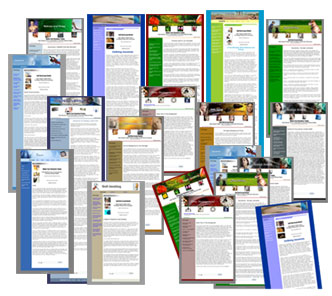
Businessknowhow: Over the years, we have helped many companies grow profitably, using simple, common-sense tactics for cost savings that go directly to your bottom line! And it’s the little things that count – a ten percent increase in profit is more likely to come from twenty things that contribute one-half percent each than from one thing that gives you the full 10 percent.
1. Improve Collections. Rather than wait for a bill to be past due, call the customer the day before the payment is due.
2. International Payments. Payment is slower in other countries. So, if you do business there, you better adjust your prices to reflect these slow collections.
3. Accounts Payable. With each vendor, work out an agreement to delay payments or spread them out.
4. Improve Cash Flow. By improving cash collections and delaying cash payouts you have improved cash collections.
5. Save Pennies. Reduce costs wherever you can.
6. Reduce Cost Of Your Office Supplies. Go through your past invoices and highlight the office supplies that make up 80% of total dollars spent.
7. Telephone Control. Make sure you are getting six-second increment billing with no minimum per call.
8. Your 800 Number. Consider a toll-free telephone number for customer service or to tie locations together seamlessly.
9. E-Mail Rather Than Telephone. Use e-mail rather than playing telephone tag and incurring unnecessary long-distance telephone charges.
10. Do Your Own.
Improving the Bottom Line [Businessknowhow]
Author: Ethan Theo
Abe WalkingBear Sanchez is an International Speaker / Trainer / Consultant on the subject of cash flow / sales enhancement and business knowledge organization and use. Founder and President of www.armg-usa.com, WalkingBear has authored hundreds of business articles, has worked with numerous companies in a wide range of industries since 1982 and has spoken at many venues including the Shakespeare Globe Theater in London.
Work Life Freshness

Small Business CEO: Are you or your team stuck in a rut, new ideas just don’t seem to occur, everyone is almost zombi like in adherence to how things have always been done?
Do you need new ideas, would some fresh thinking be a booster shot for your business, then read on.
Here are Ten Actions you can take to Achieve Freshness Today:
1. Take a new form of transportation to work.
2. Read a new magazine or watch a new TV show.
3. Plan a lunch with people you never lunch with.
4. Get out of your normal work environment for a half-day per week.
5. Ask your family (especially your kids) to help solve a problem you are working on.
6. Allocate double the normal time you spend solving a problem, make at least three options.
7. Block out time for your whole team to do something new together once a month.
8. Take a walk in the park at lunch time.
9. Listen to the Pop Music charts.
10. Reinvent your personal job role at least once per year.
Stuck In a Rut – Ten Actions to Achieve Freshness Today [Small Business CEO]
How to Soup Up Web Site Content

NFIB: On the Web, content is king–or it should be. If you want people to visit, stick around and come back to your small business’ Web site, give them substance. The appearance of your Web site is still important in helping establish professionalism and credibility. But the information and other substantive material you provide matter most.
One study, from the Poynter Institute and Stanford University, showed that, unlike with newspapers and magazines, people who read Web news sites typically focus on the text first, looking at photos and graphics afterward. People on the Internet operate in “Internet time” or, in other words, fast. They don’t linger over Web pages as they would a newspaper or magazine when drinking a cup of coffee.
People reading Web sites, for the most part, seek substance over style and usefulness over flash. They want to get what they want quickly. Here are some ways to make this happen:
-Readers should know immediately upon accessing your site why they should stick around and what’s in it for them.
-Make background information about yourself or your organization available from the home page, if appropriate.
-If your site consists of more than a few pages, provide a site map or index that displays all the interior links for those who want to get their bearings from the outset.
-It’s usually better to keep text brief. Break up long passages into multiple pages.
-Text should be accurate, complete and interesting.
Beefing Up Your Web Site Content [NFIB]
How To Build A Cash Pool

Businessknowhow: Although your income statement might show a healthy profit, it doesn’t amount to a hill of beans if you have no cash flow.
Cash flow represents the amount of money coming in to your business through services rendered and products sold, and money going out to cover expenses and production costs. Your primary responsibility as a home-based business owner is to ensure the flow is consistent with more money coming in than going out so a pool starts to form to hold the overflow.
Integrate these seven simple rules to your operating strategies and enjoy the benefits of a steadily growing cash pool.
1. Request payment prior to delivering your product or service.
2. Pay every bill on time to avoid late payment charges and earlier only if special payment discounts apply.
3. Deposit payments as soon as you receive them.
4. Use a business credit card whenever possible for travel, meals, and minor expenses.
5. Create continuity sales.
Build A Cash Pool For Your Home-Based Business [Businessknowhow]
Entrepreneurs: Born or Made?
 BusinessWeek: When it comes to being an entrepreneur, is it simply a matter of physiological hard wiring? Or is the entrepreneurial spark something that can be lit? Clearly, qualities such as risk taking and determination, common traits in many entrepreneurs, are part of one’s DNA. However, transforming inspiration into a business concept is one thing, and transforming a concept into an actual business is another. Can the characteristics often associated with entrepreneurs—drive, confidence, insight—be acquired? Can they be learned?
BusinessWeek: When it comes to being an entrepreneur, is it simply a matter of physiological hard wiring? Or is the entrepreneurial spark something that can be lit? Clearly, qualities such as risk taking and determination, common traits in many entrepreneurs, are part of one’s DNA. However, transforming inspiration into a business concept is one thing, and transforming a concept into an actual business is another. Can the characteristics often associated with entrepreneurs—drive, confidence, insight—be acquired? Can they be learned?
With more and more individuals eschewing the corporate ladder in order to start their own outfits at ever younger ages, BusinessWeek.com recently put the question to a cross-section of entrepreneurs and academics: Are entrepreneurs born or made?
Is There a Gene for Business? [BusinessWeek]